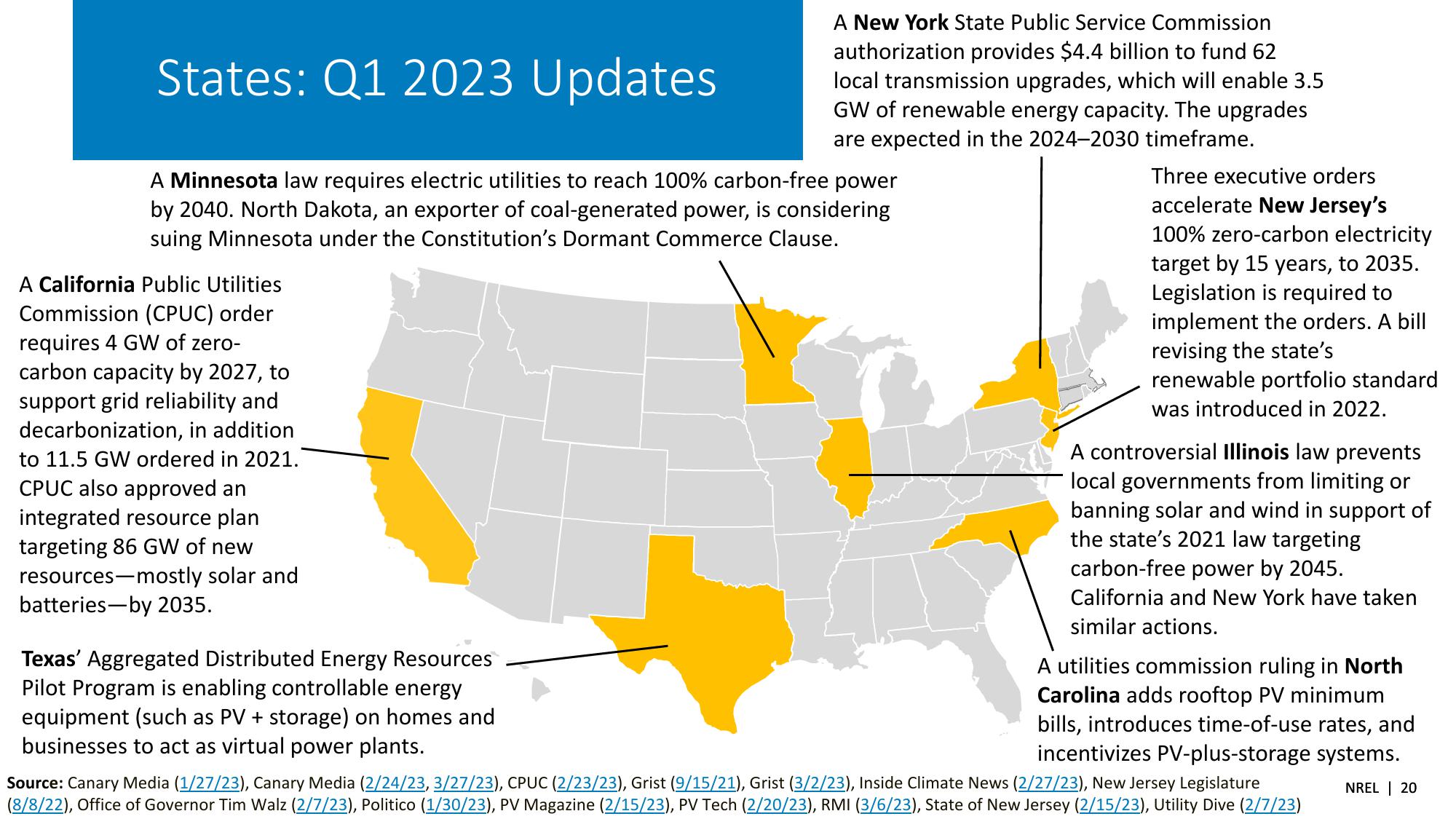Spring 2023 Solar Industry Update
States: Q1 2023 Updates
A New York State Public Service Commission
authorization provides $4.4 billion to fund 62
local transmission upgrades, which will enable 3.5
GW of renewable energy capacity. The upgrades
are expected in the 2024-2030 timeframe.
A Minnesota law requires electric utilities to reach 100% carbon-free power
by 2040. North Dakota, an exporter of coal-generated power, is considering
suing Minnesota under the Constitution's Dormant Commerce Clause.
A California Public Utilities
Commission (CPUC) order
requires 4 GW of zero-
carbon capacity by 2027, to
support grid reliability and
decarbonization, in addition
to 11.5 GW ordered in 2021.
CPUC also approved an
integrated resource plan
targeting 86 GW of new
resources-mostly solar and
batteries-by 2035.
Texas' Aggregated Distributed Energy Resources
Pilot Program is enabling controllable energy
equipment (such as PV + storage) on homes and
businesses to act as virtual power plants.
Three executive orders
accelerate New Jersey's
100% zero-carbon electricity
target by 15 years, to 2035.
Legislation is required to
implement the orders. A bill
revising the state's
renewable portfolio standard
was introduced in 2022.
A controversial Illinois law prevents
local governments from limiting or
banning solar and wind in support of
the state's 2021 law targeting
carbon-free power by 2045.
California and New York have taken
similar actions.
A utilities commission ruling in North
Carolina adds rooftop PV minimum
bills, introduces time-of-use rates, and
incentivizes PV-plus-storage systems.
Source: Canary Media (1/27/23), Canary Media (2/24/23, 3/27/23), CPUC (2/23/23), Grist (9/15/21), Grist (3/2/23), Inside Climate News (2/27/23), New Jersey Legislature
(8/8/22), Office of Governor Tim Walz (2/7/23), Politico (1/30/23), PV Magazine (2/15/23), PV Tech (2/20/23), RMI (3/6/23), State of New Jersey (2/15/23), Utility Dive (2/7/23)
NREL | 20View entire presentation